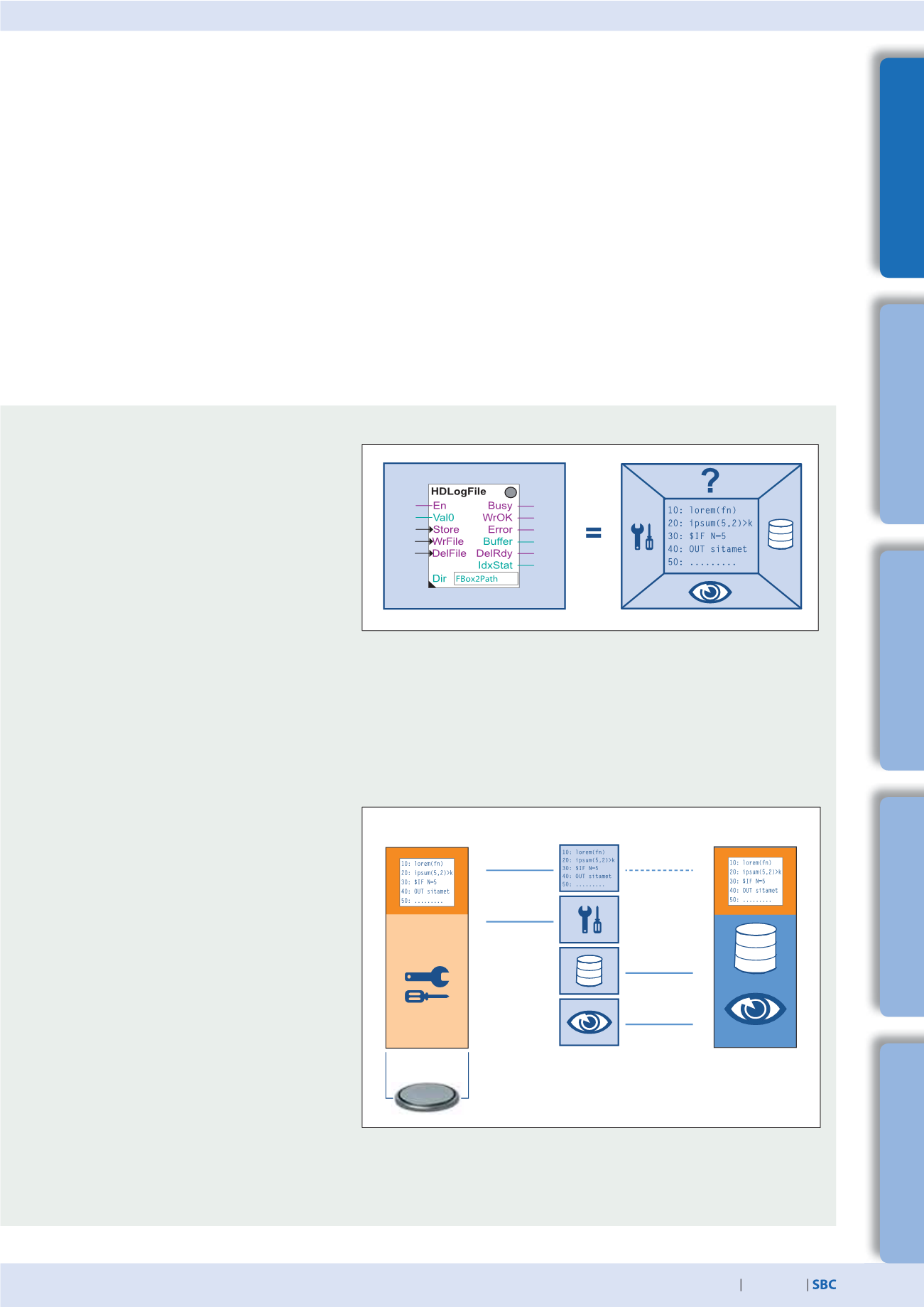
13
saia-pcd.com
I I I I I I I I I I I I I I I I I I I I I I I
I I I I I I I I I I I I I I I I I I I I I I I
I I I I I I I I I I I I I I I I I I I I I I I
I I I I I I I I I I I I I I I I I I I I I I I
►
►
►
►
►
Automation stations – the basics
5
4
3
2
1
Cabinet
components
Dedicated
room controller
HMI Visualization
and operating
Automation
stations
Consumption data
acquisition
Various data types may be found in a user program. These include pieces of data that are relevant for a fast regulation proc-
ess, as well as data records that have to be collected over a long period or permanently saved. All these types of data have
different requirements as far as the hardware is concerned.
For example, a regulation-relevant process requires fast memory in order to calculate and provide current values.
However, historical data records require sufficient remanent mass memory to cover a long time period.
Memory management in the Saia PCD® systems
If a user program function is placed in PG5,
various memory areas are required in the sys-
tem. Essentially, these areas can be divided
into 3 groups. The parameter group controls
the behavior of the FBox that is processed
in the user program. Defined statuses of the
parameters result in responses in the FBox.
Taking the example of the HDLog function,
the log data of the associated parameters
is written to the file system in an Excel-
compatible file format. Various templates are
provided in the Web Editor to visualize this
file in the web application.
These can be easily connected with the FBox
with the help of parameters. As the visualiza-
tion pages only change when the Saia PG5®
is created, these are stored in the file system.
S
Saia PG5® FBox shown as an object in the Saia PG5® Fupla engineering environment. To the right
of this, you can see which functions belong to the object.
S
This is how the functions of a [...] belonging to the Saia PG5® FBox are mapped in the memory
areas
Memory areas of the Saia PCD® systems
A distinction is made between 2 key memory
areas.
The user memory (RAM), which ensures fast
access for reading and writing, contains
time-critical content such as media and the
program code executed by the CPU. However,
this memory is not a programmable read-only
memory (PROM) and is buffered by a battery.
The flash memory, on the other hand, per-
manently saves data and provides space for
historical data records or data that will not
change again during the operation of the
system. The backup of the user application
can be stored in a file system. This guarantees
the processing of the program.
Visualization
Log data
Code
Code
Parameters
User memory
Flash memory


